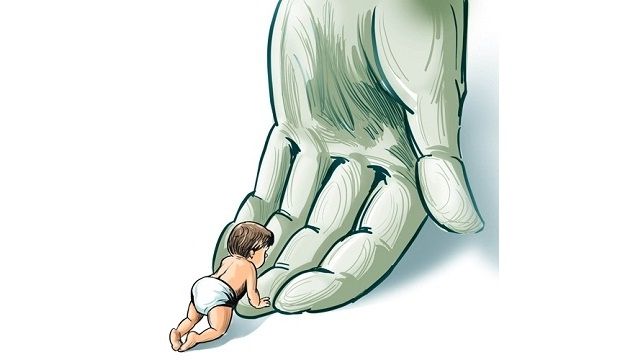INTRODUCTION:
The Maharashtra political crisis also known as the Maharashtra Legislative Assembly crisis, was a political instability that occurred in the Indian state of Maharashtra in 2022. Three main political parties of India have together joined as a coalition govt. and formed the Maharashtra govt. in 2019. It began with a rebellion within the Shiv Sena party, led by Eknath Shinde, who was dissatisfied with the leadership of Uddhav Thackeray and the party’s political alliance with the Nationalist Congress Party (NCP) and the Indian National Congress (INC). This move threw the Maha Vikas Aghadi (MVA) coalition into a crisis.
THE MAHARASHTRA POLITICAL CRISIS WAS HELD DUE TO A COMBINATION OF FACTORS, INCLUDES :-
- Internal conflicts within Shiv Sena: There were internal power struggles and disagreements within the Shiv Sena party which led to split of the party.
- Disagreements over alliance: The MVA Coalition comprising Shiv Sena, NCP and INC had differences over various issues including leadership and power sharing.
- BJP’s strategy: BJP allegedly played a role in internal conflicts within Shiv Sena and MVA Coalition aiming to gain political advantage.
- Eknath Shinde’s rebellion: Shinde, a senior Shiv Sena leader, rebelled against Thackeray’s leadership citing disagreements over various issues including with MVA.
- Political ambitions: Several leaders including Shinde and Devendra Fadnavis had political ambitions and wanted to expand their power.
- Legal battles: The crisis involved legal battles including Supreme Court case which added to complexity and uncertainty.
Maha Vikas Aghadi (MVA) whose leader was Shiv Sena’s Uddhav Thackeray who became the CM of Maharashtra but only for two and a half years. As in 2022, Eknath Shinde who was the leader of Shiv Sena, he formed a rebel group with some other MLA’s due to lack of confidence in the MVA. He said that MVA is against Shiv Sena’s ideology. After this the entire party, The Thackery Faction and Shinde Faction, divided into these two groups. “No Confidence motion” was put on Thackeray Faction and “Disqualification proceeding” on Shinde Faction. Now the govt. announced the floor test to see whether Uddhav Thackeray Govt. has a majority or not. Thackeray Faction challenged this Floor Test in the Supreme Court but the court refused to stay.
But Uddhav Thackeray without giving the floor test resigned from the position of CM. Floor test is a kind of trust vote to see whether the Govt. still has a majority or not. If the govt obtains majority, then it will continue its power. But if govt. fails to obtain majority then govt has to resign. The Speaker of the House does the Floor Test. But if there is no Assembly Session, then Governor can also conduct the Floor Test. After which, Eknath Shinde made a new alliance with the BJP and Eknath Shinde became the CM of Maharashtra.
The court held —–
- It is not right to do floor test to solve party disagreement. Governor role in floor test was wrong.
- The leading case here is the Nabam Rabia case, till then the speaker will decide the disqualification proceeding.
- Appointment of New Deputy Speaker was done in the right way.
Thus, the formation of a new govt between Eknath Shinde and BJP were held valid.
CONCLUSION:
Thus, Eknath Shinde became the new Chief Minister of Maharashtra with the support of BJP. The Shiv Sena party split into two factions, with Eknath Shinde leading the rebel faction and Uddhav Thackeray leading the original faction. The MVA coalition govt was dissolved and a new govt was formed with the support of BJP and the Shinde Faction of Shiv Sena. Uddhav Thackeray resigned as Chief Minister and also from Maharashtra Legislative Council.
The Supreme Court allowed the floor test to be conducted in the Maharashtra Assembly which resulted in Eknath Shinde proving his majority. The BJP and the Shinde Faction of Shiv Sena formed a new alliance with Devendra Fadnavis as Deputy Chief Minister. The political crisis ended with the formation of new govt. in Maharashtra but the split in Shiv Sena party and defeat of MVA coalition had significant political implications. Overall, the crisis highlighted the complexities of coalition politics and importance of political alliances in Indian politics. It also raised questions about the role of the Governor and the Supreme Court in political disputes.
FAQ:
- What triggered the Maharashtra political crisis?
Ans: The crisis was triggered by rebellion within the Shiv Sena Party led by Eknath Shinde against leadership of Uddhav Thackeray.
- What were the main reasons for the rebellion?
Ans: The main reason included disagreements over the party’s alliance with the NCP and INC and internal power struggles.
- What was the role of BJP in this crisis?
Ans: BJP allegedly supported the rebellion and formed an alliance with Shinde Faction to form a new govt.
- What was the outcome of this movement?
Ans: The crisis led to a new govt in Maharashtra with Eknath Shinde as Chief Minister and Devendra Fadnavis as the Deputy Chief Minister.
- What was the public reaction and future implications if this crisis for Maharashtra politics?
Ans: The public reaction was mixed with some supporting the rebellion and others opposing it. The crisis may lead to future political realignments and instability in the state.
AUTHOR: RUPSA MAJUMDER, STUDENT OF B.A.LLB (HONS)
COLLEGE: DEPARTMENT OF LAW, HAZRA (CALCUTTA UNIVERSITY)


